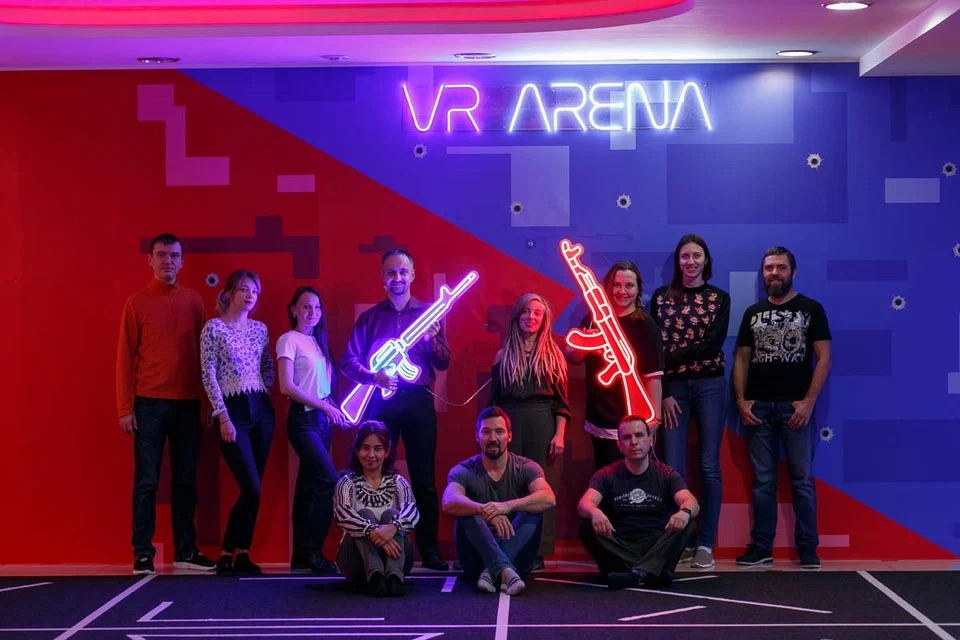VR Park Customers: Who They Are and How to Attract Them

A VR ARENA is capable of attracting a remarkably diverse audience — from children to adults and even seniors. According to analytical data, visitors range from kids aged 8 to adults over 60, including many who have never been interested in video games before. The secret lies in the broad selection of content — various genres appeal to different client groups, ensuring a steady flow of visitors throughout the year.
Let’s take a closer look at the key customer segments of VR parks and how to win their attention — with a focus on the most profitable audiences.
Key Visitor Segments of VR Parks
1. Children and Teenagers (under 18) and Their Parents
Children are the core audience of virtual reality parks. Their main attraction is birthday parties — this service is in high demand and delivers some of the highest revenues thanks to larger average bills, strong loyalty, and minimal seasonality.

It’s important to note that parents usually make the booking for younger children, so every party brings a new family, creating powerful word-of-mouth marketing. To attract families, VR ARENA venues should offer colorful and casual games suitable for beginners, simple online booking, and a safe, comfortable environment for kids’ first VR experiences. Satisfied children return enthusiastically, and parents appreciate that VR entertainment can be both fun and educational.
Advantages of the kids’ segment:
High average check for birthday packages
Families often visit together, boosting referrals and word of mouth
Strong loyalty and repeat visits with low seasonality
2. Young Adults (15–30 years old)
This group grew up with video games and constantly seeks trendy, adrenaline-filled experiences. For them, a VR ARENA is a stylish social spot, offering something fresh compared to traditional gaming clubs. Dynamic VR shooters and quests are especially popular — many in their 20s and 30s feel nostalgic for classics like Counter-Strike or Call of Duty and love their VR equivalents.

If a venue offers exclusive high-quality content, this demanding audience becomes repeat customers. They also share experiences actively — posting VR photos and videos online, effectively becoming brand ambassadors and drawing in new visitors.
Hardcore gamers, however, are a smaller group: many already own VR headsets at home. They typically visit a park only for experiences unavailable elsewhere — such as large free-roam arenas where friends can physically move together in the same virtual world. To attract this demographic, it’s essential to have modern equipment, popular genres (shooters, horror, racing), and create viral content optimized for social sharing.
3. Adults 31+ and Corporate Clients
Older audiences usually visit VR ARENAs for specific occasions: family leisure, celebrations, or team-building events. For them, turnkey solutions are key — ready-made event packages, excellent service, and safety assurance.

Corporate clients are another profitable segment — companies frequently rent out VR ARENA locations for corporate parties and group activities.
Additionally, VR parks see surges in attendance during holiday periods such as February 23rd and March 8th, when couples and groups of friends celebrate in creative ways — generating average checks comparable to birthdays. The New Year season is especially lucrative, with many businesses booking VR locations for company events.
During quieter weekdays, when there are no special occasions, parks rely on individual visits with lower average spend. To smooth demand fluctuations, operators use advertising, promotions, and weekday specials.
How to Attract Clients to a VR park
1. Content and Service Variety
A broad catalog of games and programs is key to appealing to multiple demographics. Regularly update your library — new titles bring back loyal customers and attract fresh audiences.
2. Online Marketing and Social Media
Leverage digital tools so customers can easily find you. Set up targeted ads for key searches (e.g. “birthday venue” or “corporate event ideas”). Search ads perform especially well since they capture active intent. Combine this with SEO optimization for your website. Encourage guests to share their experiences on social media — organic word of mouth from young adults generates powerful viral reach at zero cost.

3. Partnerships and Influencers
Expand your reach through collaborations with other local businesses — cafes, cinemas, or kids’ centers. Offer cross-promotions (e.g. discounts on VR after visiting a partner cafe) or co-participate in city events.
4. Offline Presence and Location
Don’t underestimate spontaneous discovery. A bright sign, open storefront, or demo area can catch the attention of passersby — especially in high-traffic zones such as shopping malls.
5. Customer-Centric Service
Attracting visitors is only half the battle — retaining them matters more. The first VR experience is crucial, especially for newcomers unfamiliar with the technology. Well-trained staff who guide, assist, and encourage players can turn curiosity into delight. A welcoming and professional atmosphere builds trust and repeat business.
Collect feedback, reply to social messages, and implement suggestions. Loyalty programs, discounts for return visits, and personalized invitations to new games further strengthen retention.
Сonclusion
Modern VR ARENAs attract a wide range of visitors — kids, teens, adult gamers, parents, and corporate teams. The key is to tailor experiences for each group. A successful VR project understands and monetizes every segment — from high-margin birthday parties to subscription-based gamer visits.
By combining quality content, thoughtful marketing, and customer-focused service, you can build a profitable and sustainable VR business.

The experience of the international VR ARENA network shows that a wide audience and unique content make virtual reality parks both resilient and profitable. Apply these best practices — and your VR ARENA will always be filled with guests eager to step into new worlds.


